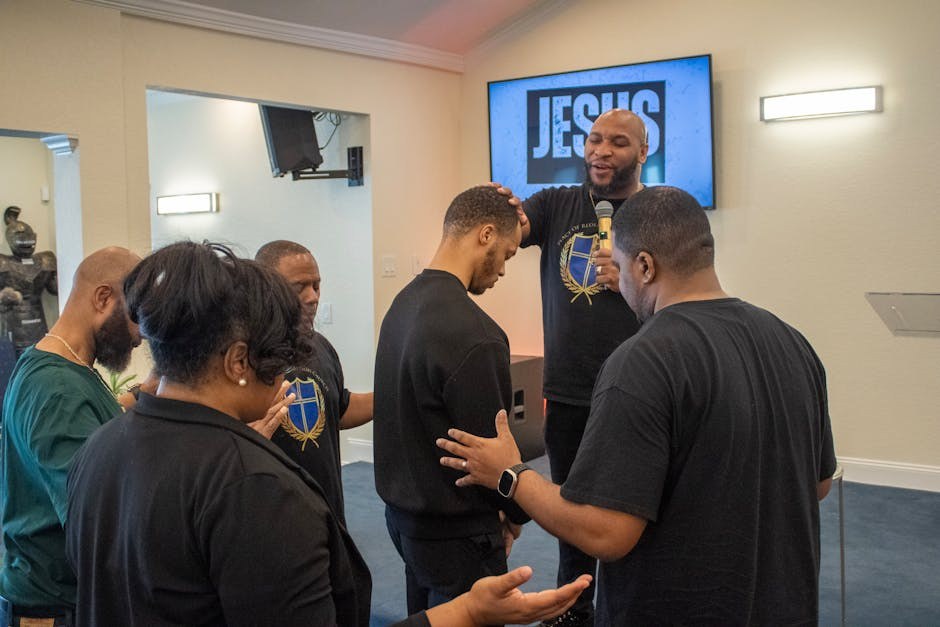Not every intense connection is healthy – sometimes it closes around you like a net. If your days feel smaller, your voice quieter, and your choices increasingly shaped by fear or obligation, you may be caught in a love trap . This guide reframes familiar relationship dynamics, shows how they disguise themselves as romance, and walks you through practical ways to step back into freedom without losing your capacity to love.
What People Mean When They Say “Love Is a Trap”
A love trap is not a dramatic twist from a movie; it’s a pattern that feels promising at first and then steadily undermines emotional well-being. It often begins with convenience, chemistry, or timing and ends with self-doubt, confusion, and a creeping sense that you’re living someone else’s life. On the surface, the partnership might appear enviable – compatible jobs, shared interests, flattering attention – yet under that polish sits a mismatch of needs, values, or readiness. You stay because walking away seems costlier than staying, even when staying hurts.
What makes a love trap slippery is that it rarely announces itself. It arrives as an excellent first date, a “perfect on paper” match, or an alluring mystery. You may find yourself saying, “This should work,” even as your body braces and your thoughts loop. The aim here isn’t to demonize affection; it’s to spot the difference between a relationship that supports you and one that quietly narrows your life.

How a Love Trap Disguises Itself
Think of camouflage – a love trap blends in by imitating what you want. If you crave stability, it shows up as compatibility. If you long for excitement, it shows up as drama. If you’re hungry for validation, it shows up as praise. The early signals are intoxicating, which is why you might overlook mismatches around communication, emotional availability, or shared goals. By the time the glow fades, habits and hopes are entangled.
Another hallmark is confusion about motive. Are you here because this person enriches your life, or because the relationship fills time, soothes anxiety, or looks good from the outside? When intention blurs, the love trap tightens – you keep investing to justify the investment.
Common Patterns That Pull People In
Below are recurring scenarios that pull otherwise thoughtful people into dynamics that feel like love but function more like quicksand. Use them as mirrors, not verdicts.

The “meant-to-be” pairing
You’re the duo everyone expected – the admired classmates, the creative collaborators, the couple whose traits line up neatly. Similarity looks like destiny, so you fast-track commitment. But likeness alone cannot carry intimacy, repair conflict, or bridge differences in desire. When the sparkle of “we fit” is doing all the heavy lifting, a love trap may be forming.
The perfect first date glow
A night full of laughter and novelty can trick the mind into assuming a future. The mood of the event – the view, the playlist, the thrill of being seen – gets pasted onto the person. If you chase the experience instead of learning who they are when the night is ordinary, you risk sliding into a love trap built on ambiance rather than alignment.
The forbidden-fruit chase
Scarcity amplifies desire. When someone seems off-limits or hard to get, the brain spins justifications. The push-pull becomes its own reward: each tiny permission feels like proof of connection. But if your focus is the chase, not the relationship, you’re nurturing the mechanics of a love trap – attraction inflated by obstacles.

The “everyone wants them” illusion
Popularity can read as quality. Seeing someone pursued by others alters perception: “If they’re in demand, they must be rare.” Once you win their attention, the pedestal cracks – the match doesn’t meet your actual needs. Basing a commitment on market hype instead of compatibility is an efficient path into a love trap .
The falling-in-like confusion
Kindness, politeness, and small generosity are wonderful – and easy to confuse with depth. If you interpret courteous behavior as profound devotion, you might overestimate the bond. Without shared vulnerability and consistent care, you’re not in abiding love; you’re in a love trap woven from pleasant gestures.
The debt-of-gratitude bind
Maybe they supported you through a crunch or made sacrifices that changed your life. Gratitude is human; obligation is heavy. When “I owe them” replaces “I choose them,” romance morphs into duty. That sense of indebtedness can lock you inside a love trap long after desire and respect have thinned.
The sunk-cost freeze
You’ve poured energy, time, and resources into the relationship, so leaving feels like waste. Yet adding more to what isn’t working won’t create a different outcome. This is where a love trap thrives – the belief that quitting equals failure, even when staying guarantees more of the same.
The now-or-never rush
A rare opportunity appears – a whirlwind romance, a relocation, a ticking biological clock – and you commit before clarity. The urgency is real, but long-term partnership needs more than momentum. If “I may never get this again” drowns out “Is this right for me?”, you may be fastening the door on a love trap .
The rebound cushion
After a breakup, the quiet is loud. A new connection eases the ache and proves you’re still desirable. Some rebounds evolve; many reenact unfinished business. When unresolved grief and comparison drive the dynamic, you can drift into a love trap that delays healing instead of nurturing growth.
The blazing chemistry loop
Electric physical compatibility is thrilling, and sexual learning is possible – but emotional fit isn’t teachable in the same way. If fireworks keep excusing emotional absence, you’ll mistake intensity for intimacy and wake up inside a love trap where pleasure and pain keep trading places.
Practical Ways to Stay Out of the Net
None of us are immune to infatuation. The aim is not to sterilize dating but to add structure and reflection so your heart and judgment get equal say. The following practices help you sidestep the pull of a love trap before it tightens.
Name what you actually need
Write a concise, non-negotiable list – values, communication style, life direction, boundaries. Keep it realistic and check it when you’re dazzled. When your needs are explicit, it’s harder for a love trap to hide behind charm or timing.
Hold a baseline for compatibility
If a prospect meets only a fraction of your essentials, don’t persuade yourself that longing equals potential. Alignment that falls well short of your core criteria is a warning that a love trap is forming, not a challenge to conquer.
Slow the pace
Give everyday life a chance to reveal character – stress responses, repair after conflict, consideration for others. A measured tempo protects you from the illusion that a few peak moments are proof of fit, and helps you spot a love trap masquerading as momentum.
Trust your first signal
If your intuition whispers “something is off,” treat it as data. You can revisit, verify, or disconfirm – but don’t silence it. Ignoring those early pings is how many people wander deeper into a love trap while convincing themselves they’re being optimistic.
Check your motives
Ask why you’re starting – or staying. Fear of being alone, financial comfort, social approval, or guilt are powerful forces. When these dominate, love recedes and a love trap quietly takes over the steering wheel.
Release sooner rather than later
When misalignment is clear, tenderness is exiting with honesty. Ending early prevents you from feeding a love trap with yet more time and hope. Letting go is not an indictment; it’s stewardship of your future self.
Remember your dignity
“Good enough” is costly over years. You deserve companionship that nourishes you – not a polite stalemate. When you hold that truth, a love trap loses much of its leverage.
Why Smart People Still Get Stuck
No one lands in a difficult dynamic on purpose. We lead with the best intentions and then get tangled in coping strategies that once protected us. Understanding these inner drivers reduces shame and loosens the knot of a love trap .
The project of winning love
You work tirelessly to be indispensable – anticipating needs, solving problems, over-delivering. If winning love feels safer than receiving it, you’ll equate exhaustion with worth. When the other person doesn’t meet you halfway, you double down and the love trap tightens.
Scarcity stories
Beliefs like “This is my only shot” or “People like me don’t get many chances” compress your options. Scarcity pushes you to force closeness or tolerate pain because leaving seems like stepping into an empty horizon. That fear fuels a love trap far more than real compatibility ever could.
Appeasing to keep peace
When harmony becomes the highest value, you swallow needs to avoid conflict. Over time, resentment replaces warmth. The relationship appears calm, but it’s maintained by self-erasure – a signature condition of a love trap .
Misreading signals
Ambiguous words or intermittent attention invite fantasy. You fill in blanks with hopeful meanings, constructing a highlight reel from scattered moments. Without clear conversations, you may build an entire future on fragments and wake to a love trap that never matched reality.
How to Tell If You’re Already Inside
Recognition is liberating. If the descriptions below mirror your daily experience, treat them as invitations to reassess – not verdicts about your worth. Seeing the pattern is how you loosen a love trap .
Lonely together
You spend time side by side yet feel unseen. Solitude brings relief; togetherness brings tightness. When connection diminishes the moment you’re in the same room, you’re not being dramatic – a love trap thrives in that contrast.
Shorter fuse, longer list
Minor quirks ignite outsized irritation. The cup by the sink becomes a referendum on respect. Persistent hypersensitivity often signals unspoken grief – a common by-product of a love trap where needs go unmet.
Hunting for reasons to stay
Instead of remembering why you chose each other, you inventory external tethers: the lease, the kids’ routines, the ease of holidays. If logistics weigh more than love, the structure you’re maintaining may be a love trap , not a partnership.
Obligation dressed as devotion
Your partner isn’t cruel; they may even be admirable. Yet affection feels compulsory. You remain because nothing “bad enough” happened, not because something good and alive is present. That is the quiet music of a love trap .
Invisible lines of control
No one shouts orders, but you pre-edit your choices to avoid disapproval – how you rest, whom you see, what you buy. If unspoken rules shape your day, influence has tipped toward control. That climate sustains a love trap without open conflict.
Self vanishing
Conversations orbit their schedule, their ambitions, their stress. You stop bringing your inner life to the table because it seems to float away. When your existence shrinks to supporting theirs, the love trap is already built.
If You’re Caught, Begin Your Exit With Care
Leaving or remaking a relationship is not a single act but a sequence. You don’t have to blast the bridge to cross it. The steps below restore agency and clarity so you can either rebuild or release. Each action weakens the grip of a love trap and strengthens your connection to yourself.
Tell the truth – first to yourself
Name what hurts, where you feel small, and what you’ve tried. Put it on paper. When your experience is clear to you, you can communicate it without accusation. Honesty is a lantern; it illuminates the architecture of a love trap so you can find the door.
Invite structured help
Thoughtful conversations with a counselor – together or individually – supply tools for repair and decision-making. You explore patterns, learn to argue cleanly, and determine whether the relationship can meet baseline needs. Even if you ultimately part, the work frees you from repeating the same love trap elsewhere.
Rebuild self-care as a practice
Neglect accumulates quietly. Simple rituals – sleep, movement, reflective writing, time with grounded friends – return you to yourself. The more resourced you are, the less persuasive a love trap becomes, because exhaustion is no longer making choices for you.
Clarify boundaries and consequences
State what must change and what will happen if it doesn’t. Boundaries are not punishments; they’re conditions for your participation. Clarity shrinks ambiguity – the oxygen a love trap breathes.
Make a plan that honors logistics and emotion
If leaving is healthiest, map the practical pieces: finances, living arrangements, shared responsibilities. Prepare emotionally – grief comes in waves. A careful exit does not romanticize the past or vilify the other person; it simply ends the love trap with dignity.
Stay connected to trusted people
Isolation magnifies doubt. Invite a small circle to witness and support your process. Their steadiness reminds you that you are more than the story the love trap told you about yourself.
Putting It All Together
Healthy love makes room for two full lives. It steadies you, broadens your choices, and survives ordinary days. A love trap does the opposite: it compresses, confuses, and trades authenticity for stability or thrill. You are allowed to want both care and aliveness. You are allowed to pause when something glitters and ask, “Is this right for me?” You are allowed to leave what harms you, even if it once saved you. With clear needs, honest conversations, and self-respect, you can step out of patterns that hurt and into connection that lasts.